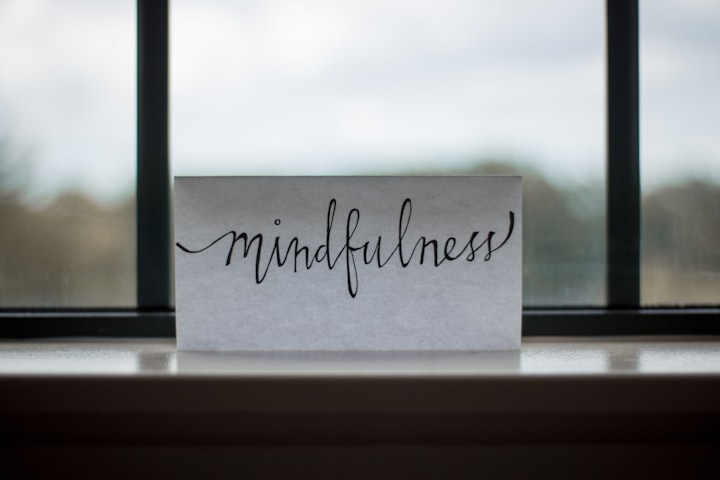Mindfulness and Meditation for a Better Life
An In-Depth Guide

Introduction
Mindfulness and meditation have been gaining popularity in recent years as more and more people seek ways to manage stress, improve mental health, and live more fulfilling lives. These ancient practices have been shown to have a range of benefits, from reducing anxiety and depression to improving sleep and increasing overall happiness. In this article, we will explore the science behind mindfulness and meditation and provide a comprehensive guide for incorporating these practices into your daily routine for a better life.
What is Mindfulness and Meditation?
Mindfulness and meditation are often used interchangeably, but they are not the same thing. Mindfulness is the practice of being present in the moment, paying attention to your thoughts, feelings, and sensations without judgment. It involves simply observing your experiences, rather than reacting to them. Meditation, on the other hand, is a specific technique used to develop mindfulness and cultivate mental clarity and emotional stability. During meditation, you focus your attention on a specific object, sensation, or mantra to calm your mind and reduce mental distraction.
The Science Behind Mindfulness and Meditation
Studies have shown that mindfulness and meditation can have a positive impact on the brain, reducing stress, anxiety, and depression. For example, research has found that mindfulness-based stress reduction (MBSR) programs can lead to significant reductions in anxiety and depression symptoms, as well as improvements in sleep and overall quality of life. Additionally, mindfulness and meditation have been shown to increase the activity of the default mode network (DMN), a network of brain regions that is active during introspection and self-referential thought.
How to Incorporate Mindfulness and Meditation into Your Daily Routine
Incorporating mindfulness and meditation into your daily routine is simple and can be done in just a few minutes a day. Here are some tips for getting started:
- Set aside a specific time for practice. Choose a time that works best for you and make it a priority in your schedule.
- Start small. You don't have to meditate for hours at a time. Start with just a few minutes a day and gradually increase the length of your practice as you become more comfortable.
- Find a quiet and comfortable place. Find a place where you can sit or lie down comfortably and where you won't be disturbed.
- Use guided meditations. There are many guided meditations available online or through mindfulness apps that can help you get started.
- Be patient and persistent. Mindfulness and meditation take practice and consistency, so be patient with yourself and stick with it.
The Benefits of Mindfulness and Meditation
There are many benefits to incorporating mindfulness and meditation into your daily routine. Here are just a few:
- Reduced stress and anxiety.
- Improved sleep.
- Increased focus and productivity.
- Enhanced relationships and communication skills.
- Greater overall happiness and well-being.
Conclusion
Mindfulness and meditation are powerful tools for improving mental health and overall well-being. Incorporating these practices into your daily routine is simple and can have a significant impact on your life. Whether you're dealing with stress, anxiety, or simply looking to live a more fulfilling life, mindfulness and meditation are worth exploring.
Learn How to Manifest and How it Can Help You Unlock Your Full Potential - CLICK HERE
FAQs
1. How long does it take to see results from mindfulness and meditation?
It can take anywhere from a few days to a few weeks to start seeing results from mindfulness and meditation. However, the key to success is consistency, so it's important to stick with your practice even if you don't see immediate results.
2. Is it necessary to meditate for hours at a time?
No, you don't have to meditate for hours at a time. In fact, starting with just a few minutes a day is a great way to get started. You can gradually increase the length of your practice as you become more comfortable.
3. Is mindfulness and meditation only for people with mental health problems?
No, mindfulness and meditation are not just for people with mental health problems. In fact, these practices can benefit anyone looking to improve their overall well-being.
4. Do I need to clear my mind during meditation?
No, you don't need to clear your mind during meditation. In fact, it's normal for your mind to wander during meditation. The goal is to simply notice when your mind has wandered and gently redirect your focus back to your breath or the object of your meditation.
5. Is it necessary to sit in a specific position during meditation?
No, it's not necessary to sit in a specific position during meditation. The most important thing is to find a position that is comfortable for you and allows you to stay alert and focused during your practice.
About the Creator
YathirajaSampathKumar K R
Hello everyone, my name is YathirajaSampathKumar K R and I am a business man, software architect, and NFT creator with 12 years of experience. In addition to my professional pursuits, I am also an author, writing motivational stories.






Comments
There are no comments for this story
Be the first to respond and start the conversation.